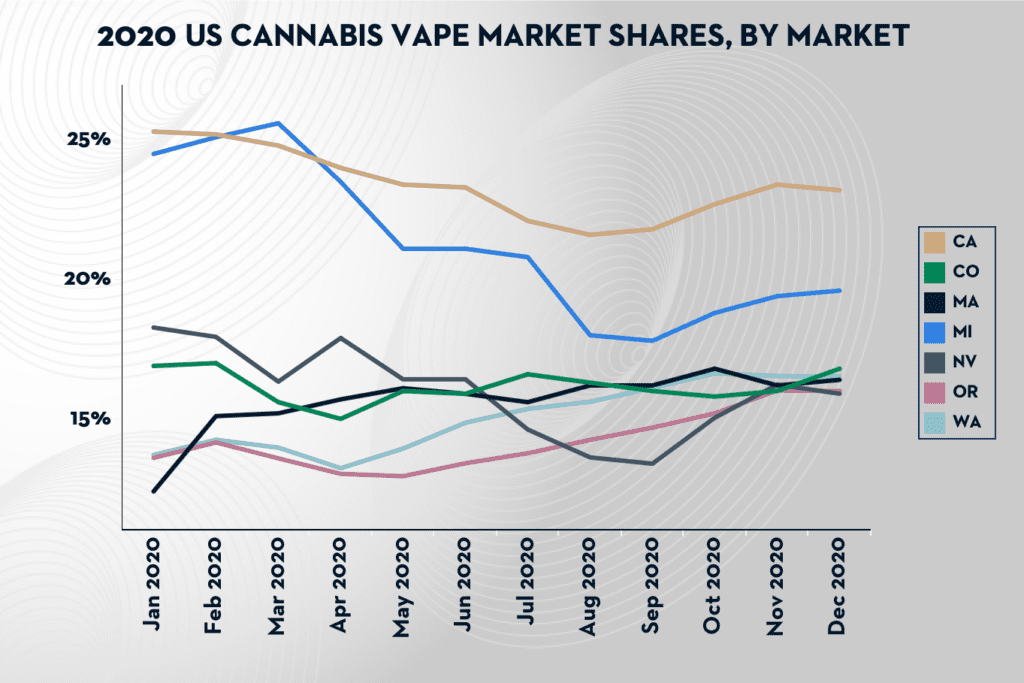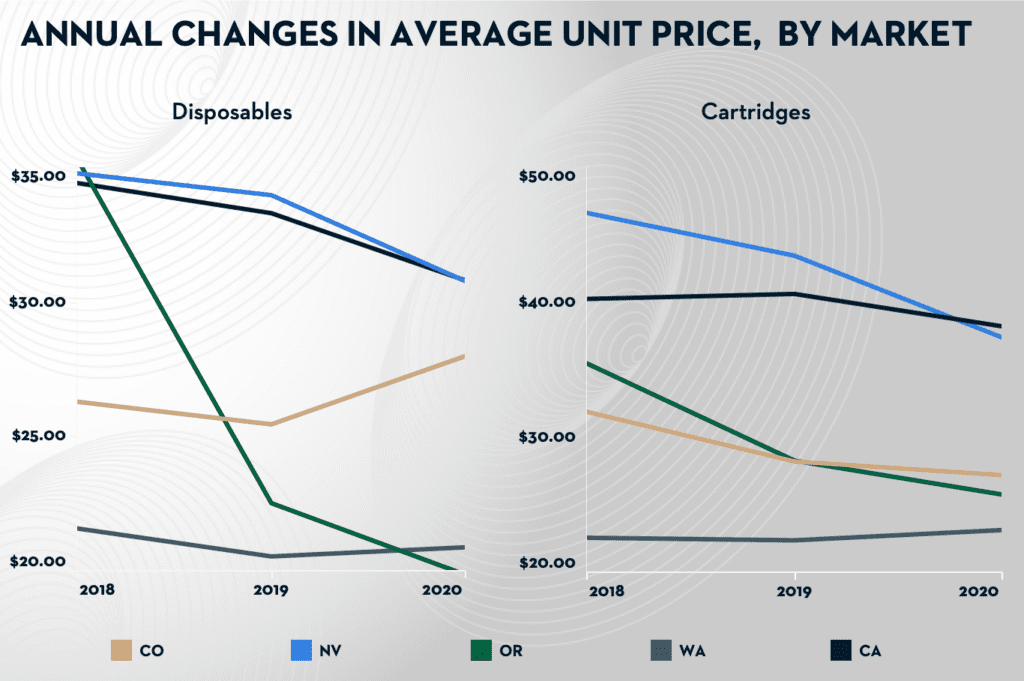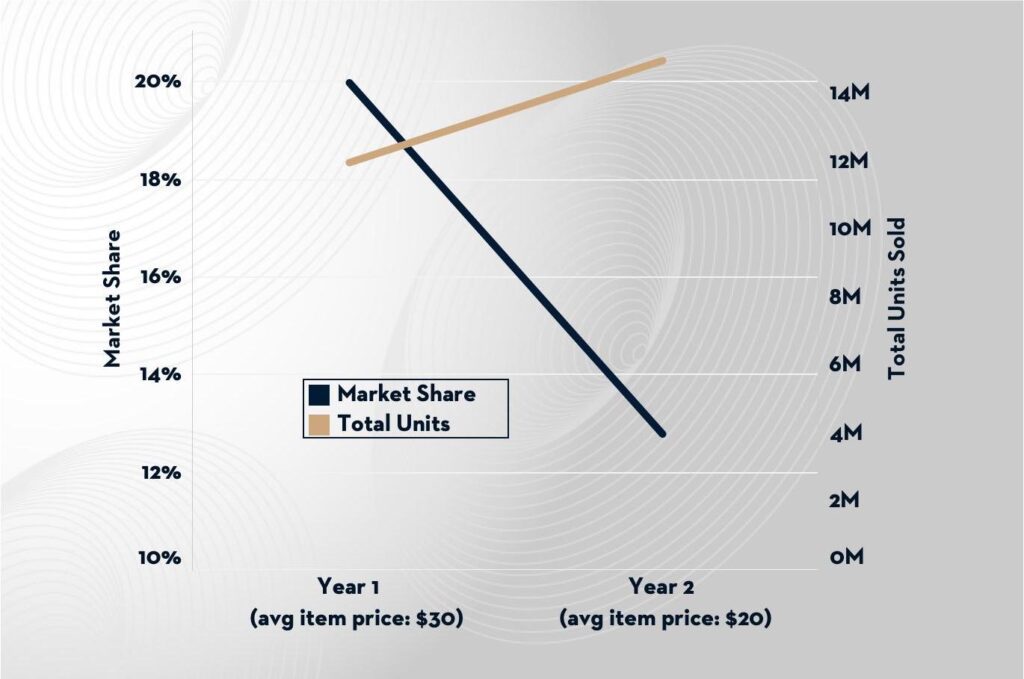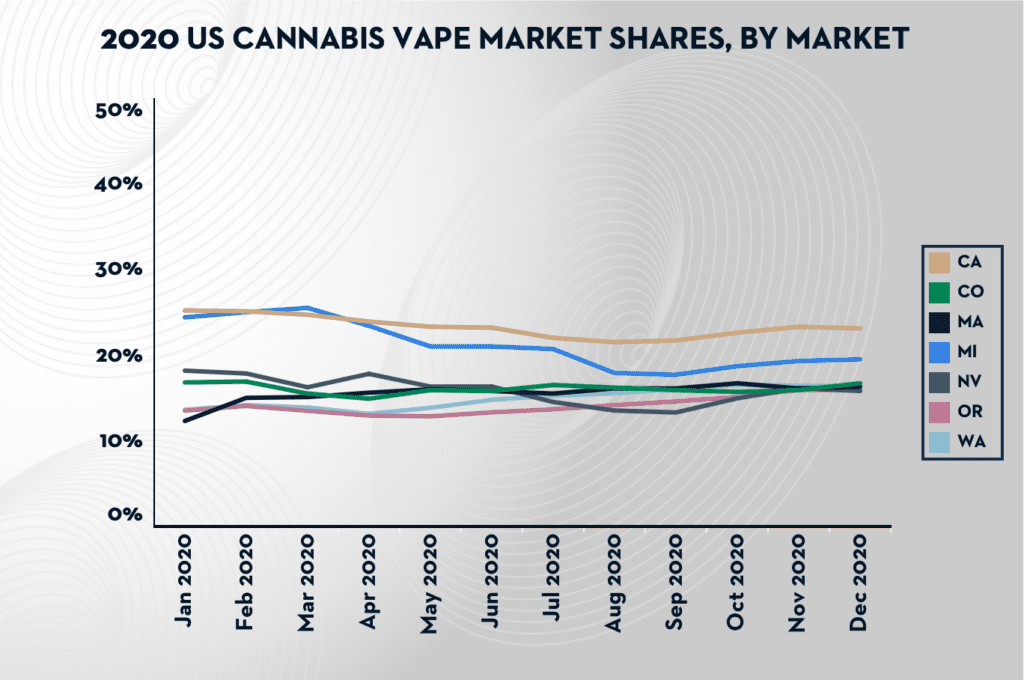Posted by Dave Kaplan
4 years ago / April 8, 2021
Why The Market Share Decline For Cannabis Vapes Is Not A Cause For Concern

Recently, we’ve seen a few stories about the market share decline of vape as a category in certain US markets. Upon first glance many of us were confused; all of the vape data we’ve studied this year has suggested the very opposite. So we dove into the data and discovered that although vape market shares have dipped slightly over the last 24 months, the cannabis vape industry, as a whole, is thriving and maturing at a steady, healthy rate.
In fact, if there’s any lesson or insight to take away from these articles, it would be that market share percentages and their fluctuations tell only one part of the story—a small and often distorted part. Here’s why:
Market Share Metrics Are Often Misleading
The market share declines referenced in these articles were determined by total sales, not by total units sold—and that is a critical distinction! That is because only total units sold speaks to the quantities moving through a market at any given time – much more than dollars does. This metric gives us a better gauge on growth and maturity, independent of other factors.
For instance, if the average price of a product category is driven downward over time due to brand competition, product innovation or increases in product sizes and value, the category’s total sales figures and market share could be proportionally affected. That is exactly what has happened in the cannabis vape sector since 2018, where the average unit prices of both cartridges and disposables, for the most part, has dropped substantially in US rec-legal markets, despite the total number of units sold having gone up in the same period.

(data sourced from Headset Insights)
“At the end of the day, raw data is only as good as the tools used to interpret it,” says Greentank CFO, Jeremy Stepak. “We love opportunities like this that allow us to dive deep into the data and dispel surface-level conclusions. Having said that, the data coming out of the industry has truly never been better or more comprehensive. We use it every day to help inform our operations and partners. It truly has become one of our most valuable assets.”
Think of it like this:
12 million units of Category X are sold at an average price of $30 in Year One, generating $360 million in sales. The entire industry generates $1.8 billion in sales during Year One, resulting in Category X having a market share of 20% in the period. Now envision that each category within the industry experiences a 25% growth in sales the following year, but only Category X’s average unit prices drop by $10 per unit for any number of the above-listed reasons.
In this scenario, Category X would sell 15 million units at an average price of $20 in Year Two, generating $300 million in sales—a $60 million dollar dip from Year 1. Category X’s market share would plummet to 12.8% in Year Two, despite selling more units than Year One and experiencing the exact same rate of YoY unit growth as every other product category in the industry.

(data sourced from Headset Insights)
This knife cuts both ways: When the average price of certain product categories goes up over a period of time, its total sales and market share can also rise . . . even if the sector experiences a drop in unit sales!
Market shares, especially in younger markets, are prone to fluctuate over time for several other reasons as well:
- More product categories entering the industry over time
- Nascent product categories improving and thus becoming more attractive to consumers
- More first-time consumers entering the industry and experimenting with various product categories until discovering which they like best.
Year-Over-Year Vape Market Share Changes Have Been Minimal

(data sourced from Headset Insights)
Indeed the market share of cannabis vape sales did dip over the course of 2020 from 22.9% in January 2019, but only by a total margin of 3.1%. Not exactly an earth-shattering drop, particularly when we consider that a short-term vape crisis emerged over that same time period.

(A more macro look at cannabis vape’s market share changes)
More importantly though, the data shows that in most markets, shares of vape as a category of sales actually rose in 2020! Although vape dipped just over 4% in Michigan, 2.4% in both California and Nevada, and a negligible 0.1% in Colorado, healthy gains were made in Oregon (2.4%), Washington (2.8%), and Massachusetts (4%). Of course, California’s vape market is the biggest of the group, by far, and because of its sheer size, the year-over-year change of its vape market share alone will always distort the sector’s overall market share.
The reality is that the market share of cannabis vape in 2020 went up in a handful of markets and down in a few others, but not by a significant amount in either direction. The amount of total cannabis vape units sold, on the other hand, went up significantly in 2020, but you’ll have to wait until next week to find out by exactly how much.
Stay tuned for part two of this article series, where we’ll take a closer look at the cannabis vape sector’s impressive growth using comprehensive, real-time cannabis vape sales data. In the meantime, please reach out to Greentank for any additional industry insights, or to learn more about the industry’s top vape hardware solutions.
Filed Under:
Tagged with:
Interested in our products?
Contact us to find out how you can carry the most reliable vape hardware solutions on the market.
General Requests
Logistics
